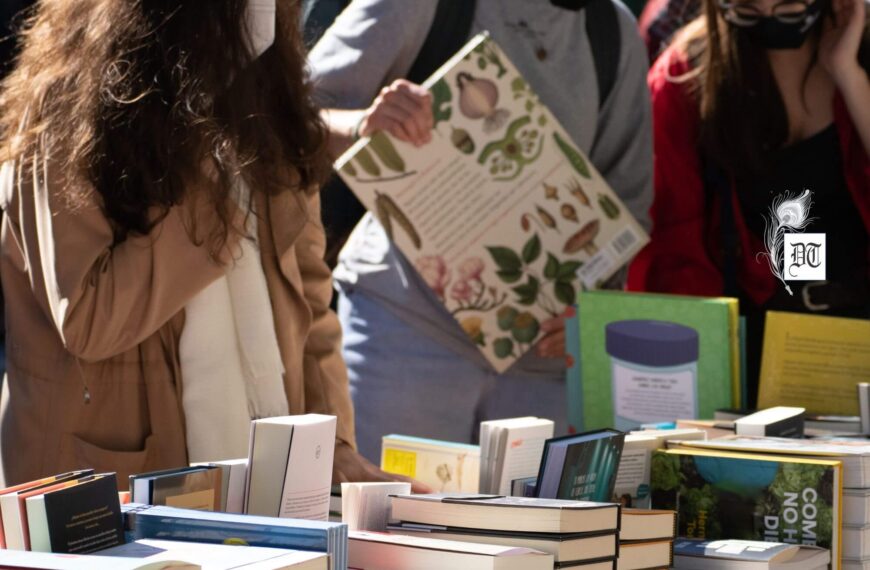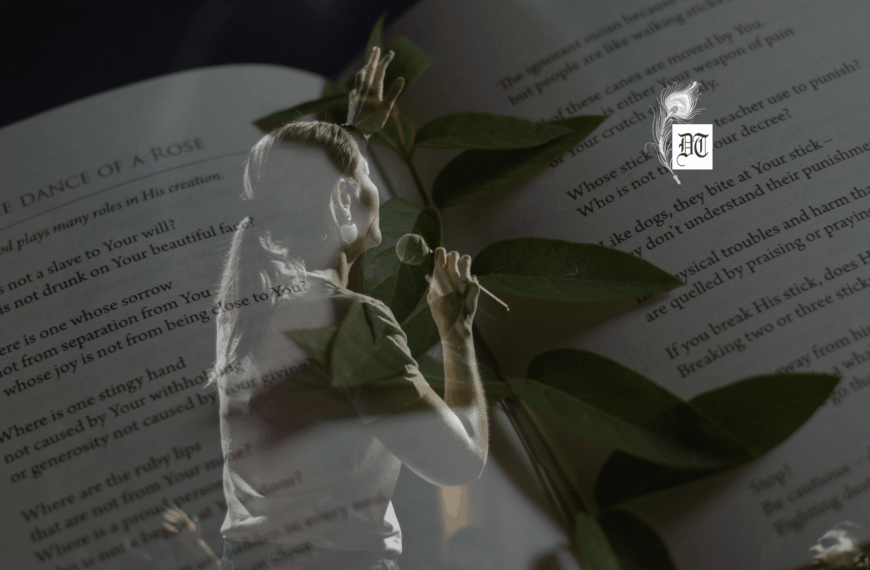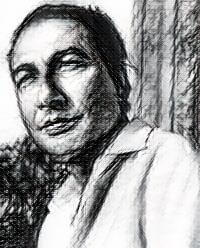Gita Mehta’s fictional writings are a revolt against the Western way of looking at Indian life and culture. An important post-colonial Indian woman writer, she is dogma free to receive and internalise epoch-making ideas of the West. At the same time, she is a staunch votary of India’s millennium old tradition and culture. Basudeb profiles her, in the weekly column, exclusively in Different Truths.
Gita Mehta belongs to a renowned Odia family, daughter of a statesman Biju Patnaik and the elder sister of Nabin Patnaik, who has been the Chief Minister of Odisha, since 2000. She was born and educated in Delhi and afterward at Cambridge University.
Her fictional writings are a revolt against the Western way of looking at Indian life and culture. Her major works are Karma Cola (1979), Raj (1989), A River Sutra (1993), Snakes and Ladders: Glimpses of Modern India (1997) and Eternal Ganesha from Birth to Rebirth (2006).
Mehta seems to be a highly opinionated and strong writer, who is dogma free to receive and internalise epoch-making ideas of the West. At the same time, she is a staunch votary of India’s millennium-old tradition and culture. But her works reflect how the overwhelmingly evil aspects of the impact of the West after Indian Independence start destroying and replacing all which Indians have inherited. The post-colonialism approach to her writings revealed through her novels lies her binary acceptance of the good and rejection of the bad of the West along with her championing of Indian tradition and culture. She owns three houses, in Delhi, London, and New York. The advent of winter in India is her “Home Coming”. As a journalist, she visits different countries. During the Indo-Pak War in 1971, she goes to the emerging Bangladesh as an independent country.
 In Karma Cola, Gita Mehta appears to be a satirist by introspecting how the people of the West can conceive the idea that visits to India will help them understand the Hindu religion which is harmoniously and inseparably intermingled with Indian philosophy. Her understanding of the Western people is that the concept of spiritual enlightenment is a kind of commodity, which they can get hold of that by finding out a Guru in India, who will hand it over to them. The novel is a kind of mockery to this naïve western idea about what India is. The novel is a record with the novelist’s own comments on how the people in the West are ignorant of India’s interpretation of spirituality, which is a particular way of looking at life and it is beyond the imagination of common people of the West that Hindu philosophy and religion stands on the utmost importance of the Karma and the Karma of the past lives is carried over in the present life. Every creature is a part of the Divine. Soul in life is immortal and soul simply changes His attire in every life in this world and the life in this world is Maya. There are thirteen sections in this novel. The concluding sections of the novel introduce a close examination of the importance of sexuality in human life. In section twelve Gita Mehta underlines that it is very difficult for the people of the West to understand and internalise the true spirit of spiritual enlightenment of the East because, first of all, it is very “harsh” and the Indian philosophical realisation needs to be practiced in day to day life. Then only the process of the understanding of Indian philosophy and religion will be complete. The authorial comment in this context is that the true understanding of the Indian philosophy and religion is almost impossible for a man belonging to the West. The last section pinpoints that both the East and West are responsible for this corruption of perception of the East. But towards the end of the novel ends with a note of optimism. Both the East and the West will have to work together hard to explore the true, genuine and “un-exploitative” interaction with each other and that way the spiritual relationship can be established.
In Karma Cola, Gita Mehta appears to be a satirist by introspecting how the people of the West can conceive the idea that visits to India will help them understand the Hindu religion which is harmoniously and inseparably intermingled with Indian philosophy. Her understanding of the Western people is that the concept of spiritual enlightenment is a kind of commodity, which they can get hold of that by finding out a Guru in India, who will hand it over to them. The novel is a kind of mockery to this naïve western idea about what India is. The novel is a record with the novelist’s own comments on how the people in the West are ignorant of India’s interpretation of spirituality, which is a particular way of looking at life and it is beyond the imagination of common people of the West that Hindu philosophy and religion stands on the utmost importance of the Karma and the Karma of the past lives is carried over in the present life. Every creature is a part of the Divine. Soul in life is immortal and soul simply changes His attire in every life in this world and the life in this world is Maya. There are thirteen sections in this novel. The concluding sections of the novel introduce a close examination of the importance of sexuality in human life. In section twelve Gita Mehta underlines that it is very difficult for the people of the West to understand and internalise the true spirit of spiritual enlightenment of the East because, first of all, it is very “harsh” and the Indian philosophical realisation needs to be practiced in day to day life. Then only the process of the understanding of Indian philosophy and religion will be complete. The authorial comment in this context is that the true understanding of the Indian philosophy and religion is almost impossible for a man belonging to the West. The last section pinpoints that both the East and West are responsible for this corruption of perception of the East. But towards the end of the novel ends with a note of optimism. Both the East and the West will have to work together hard to explore the true, genuine and “un-exploitative” interaction with each other and that way the spiritual relationship can be established.
The next novel, Raj published in 1989 is the story of Jaya Singh who belongs to the royal family of one of  the few independent states in British India before fifty years of Indian independence, in 1947. Jaya Singh is the daughter of the Maharaja and Maharani of Balmer. Mehta gives a vivid description of how she has been groomed by her parents in her childhood, in her adolescent period and youth. Jaya is typically traditional and imbued with the Indian philosophy and religion. She has grown into a true Indian woman. After her marriage to a royal prince, she discovers that her husband is totally western in his attitude to life and he always apes the western way of looking at things in India. Moreover, he is more interested in European woman than Indian woman.
the few independent states in British India before fifty years of Indian independence, in 1947. Jaya Singh is the daughter of the Maharaja and Maharani of Balmer. Mehta gives a vivid description of how she has been groomed by her parents in her childhood, in her adolescent period and youth. Jaya is typically traditional and imbued with the Indian philosophy and religion. She has grown into a true Indian woman. After her marriage to a royal prince, she discovers that her husband is totally western in his attitude to life and he always apes the western way of looking at things in India. Moreover, he is more interested in European woman than Indian woman.
Mehta delineates her husband as a Cowboy. Here lies the beginning of the conflict between the Jaya and her husband. In this novel, the novelist also introduces the Hind-Muslim relationship. There are some critics, who hold the opinion that Mehta has made inappropriate handling in depicting these two characters. According to them, these two characters are not well developed. But a careful study of the narrative of the novel shows that the novel is a novel of historical nature. In a sense, it is a historical novel. Readers can have glowing glimpses of the social and political issues of that time. The social, political and religious issues are much more important than any other thing in this novel.
 Mehta’s next important novel is A River Sutra published in 1993. Perhaps this is her most popular and bestselling novel. The river, Narmada, is in the centre of the narrative of the novel. There are many tales and many Sanskrit Sutras of Indian literature including the literature of the ancient India. In this novel, we find innumerable references to Indian Mythology and ancient Indian aesthetics and Rasa. The various pilgrims visit the sacred river, Narmada. The novel also glorifies India’s “secular humanist tradition”. A retired office civil servant, deputed as an officer, in a government guest house on the river bank, weaves different stories. References to Sufi teachings also enrich the narrative of the novel. A very important feature of this novel is that a clear understanding of the ancient Ragas of Indian music enlightens readers of what ancient Indian music is. The novel ends with the total disillusionment of that civil servant because finally, he understands a lot of India’s past from those six pilgrims.
Mehta’s next important novel is A River Sutra published in 1993. Perhaps this is her most popular and bestselling novel. The river, Narmada, is in the centre of the narrative of the novel. There are many tales and many Sanskrit Sutras of Indian literature including the literature of the ancient India. In this novel, we find innumerable references to Indian Mythology and ancient Indian aesthetics and Rasa. The various pilgrims visit the sacred river, Narmada. The novel also glorifies India’s “secular humanist tradition”. A retired office civil servant, deputed as an officer, in a government guest house on the river bank, weaves different stories. References to Sufi teachings also enrich the narrative of the novel. A very important feature of this novel is that a clear understanding of the ancient Ragas of Indian music enlightens readers of what ancient Indian music is. The novel ends with the total disillusionment of that civil servant because finally, he understands a lot of India’s past from those six pilgrims.
One of the unique features of this narrative is that there are certain common points of similarities between A River Sutra and Chaucer’s The Canterbury Tales. A comment on that the novelist, Mehta is very much influenced by her journalistic zeal may be pertinent. She is basically a journalist.
At present, she shuttles among the three countries, India, United Kingdom and the United States, living in her three different homes.
©Basudeb Chakraborti
Photos from the Internet.
#GeetMehta #Novelist #FictionWriting #MakingOfLiterature #KarmaCola #Raj #ARiverSutra #SnakesAndLadders:GlimpsesOfModernIndia #EternalGaneshaFromBirthToRebirth #DifferentTruths




 By
By
 By
By
